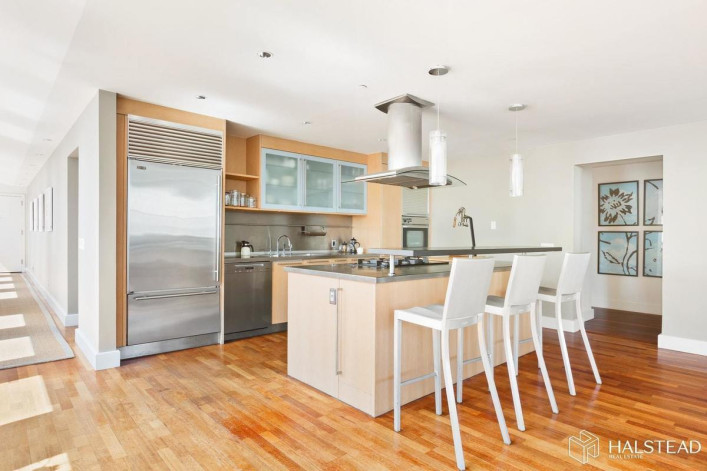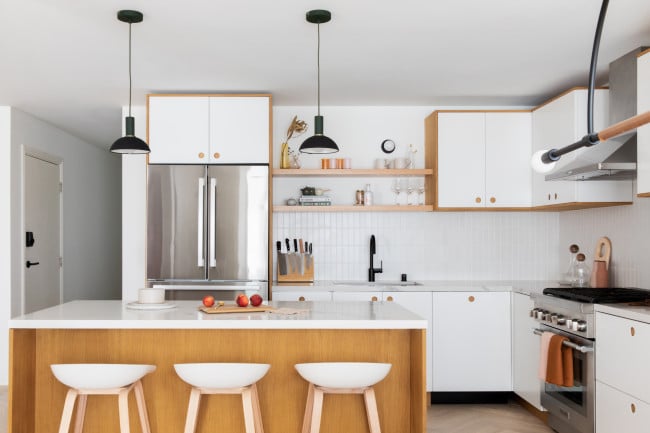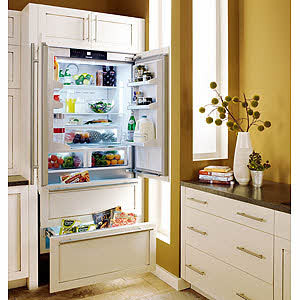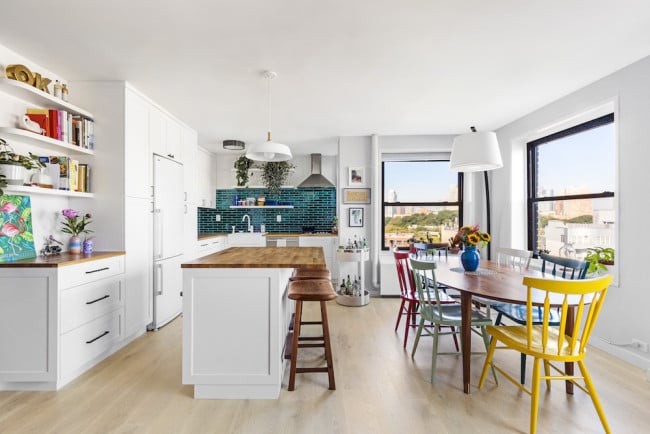What is a 'chef's kitchen'?

The listing for this Tribeca condo highlights its chef's kitchen. The term is used loosely to describe an upscale kitchen with high-end appliances and more space than usual.
It is extremely common these days to see listings that describe a kitchen in an apartment or house as a "chef's kitchen." We know that people (especially New Yorkers) are into cooking now more than ever, but still, most city residents aren’t chefs and don’t need the bells and whistles a true pro utilizes. (And yeah, a lot of delivery happens here too, but that’s another story.)
So what is a chef’s kitchen, and what should buyers expect when they see that term in a description?
A slippery term
What qualifies as a chef’s kitchen can vary from agent to agent, and listing to listing.
“In terms of how it is used in real estate advertising, a ‘chef’s kitchen’ is a very loose term. There is no official designation as to what is included. If you see a ‘chef’s kitchen’ noted in a broker’s ad for a $20 million Park Avenue penthouse – you can likely expect different amenities than in an $800,000, one-bedroom co-op,” says Brian Morgan, a broker at Citi Habitats.
So you should expect prices, materials, and size to correspond roughly with the price or rent for the property. In other words, all chef's kitchens are not made equal.
You can expect more space
One thing you should expect is a certain amount of space. People who order takeout or heat things up in the microwave don’t need a lot of room to do it; people who cook, do. This applies to the square footage to move around, counterspace (key), and a layout that facilitates cooking.
“A chef's kitchen would be large enough for more than one person to comfortably prepare food on multiple surfaces; it should possess a certain flow for efficiency of movement that easily allows for entertaining and cooking for large parties,” says Elizabeth Kohen, owner of Garfield Realty.
At the higher end of the market, you get a lot more space, larger surfaces, and maybe an island.
Appliances are upscale
Name-dropping is the bread and butter, so to speak, of the chef’s kitchen description.
“The Holy Grail of true high-end kitchen in Manhattan is the very lovely and powerful beast named Wolf!,” says Lewis Friedman and agent with the Friedman Team at Compass. “It is always love at first sight when a human meets the 48-inch gas range. Her red knobs are like the beacon of Atlantis to those in the know. Her stainless steel body, six, powerful burners that can easily go to a quick sear or boil, or a gentle simmer, in a heartbeat. Two ovens—one being convection—is the magic weapon of any chef to get that perfect browning.” (Regardless of the brand, a convection oven is an extra you’ll see in a high-end kitchen.)
Other brands you’ll see are Sub-Zero, Viking, Bertazzoni, Miele, Thermador, Gaggenau and Jenn-Air. None of these brands are cheap; and some are very, very expensive.
Other features of a chef’s kitchen may include a supplemental sink (sometimes in the island), and additional oven or refrigerator, two dishwashers to facilitate entertaining, a pot filler, rotisserie, warming drawers, a pot hanger overhead and wine storage.
Countertops space is crucial real estate
This is another element that is often highlighted in descriptions. “Marble, stone, or concrete countertops are common in chef’s kitchens,” says Morgan. “However, quartz is becoming increasingly popular because it is less porous and easier to maintain– while the old stand-by granite is not as popular as it once was. But expansive counter space for food prep is paramount and overall more important to a chef than the surface material.”
What's the look?
There are no rules regarding the aesthetics of a chef’s kitchen, so you never know what you’ll get—although the trend in kitchens now is more toward a spare and streamlined look, with hidden appliances. “A kitchen’s design is a question of personal taste,” says Morgan. “I’ve had listings with elaborate kitchens that were sleek and ultra-modern—as well as ones outfitted in a country or farmhouse design. No matter the aesthetics, functionality is key.”
You Might Also Like






























